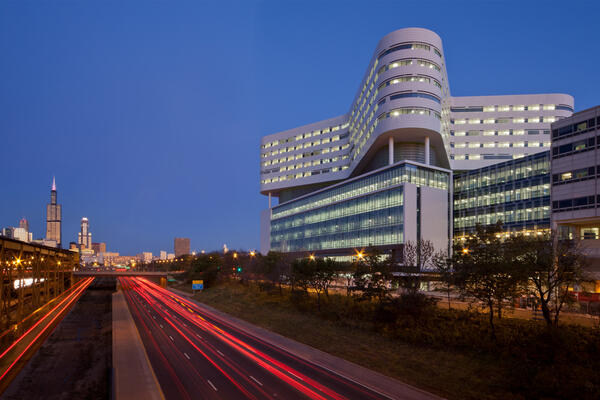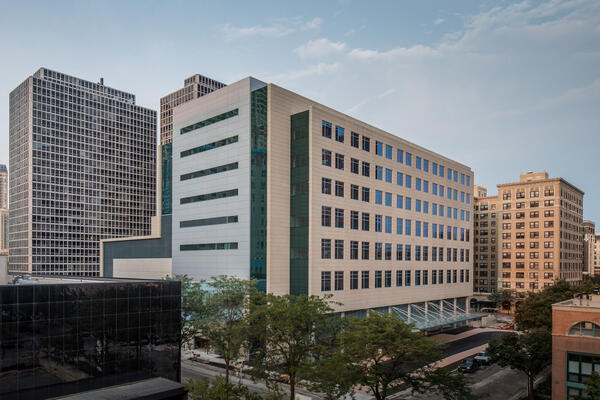Named after longtime Rush donors and patients, the Joan and Paul Rubschlager Building will be the hospital group’s first outpatient center to solely focus on cancer and neuroscience treatment. At 488,000 sf, the facility will serve for the projected growth of the University’s Medical programs and projection of need across the campus. With clinical trials for new treatment options, the facility will bring together health care providers across many different fields of study, ranging from internists and medical oncologists to psychologists and social workers.
The facility connects to the existing 14-story Medical Center’s butterfly-shaped tower through an enclosed walkway on the fourth floor. Features will include diagnostic imaging, radiation, infusion therapy, and acupuncture. To accommodate for a large number of patients and staff, the facility will include a six-story parking structure to accommodate for roughly 900 spaces.
Digging Connecting Tunnel Below Ashland Avenue
To connect the new building to the campus central plant, we decided to bore six below-grade "sleeves" to house the different utilities necessary for the operation of the new building. One of the first projects in Chicago to utilize this technique, the project team excavated an ascending pit roughly 54'x37' and 22' deep on the east side of Ashland and a receiving pit roughly 37'x24' and 27' deep on the west side adjacent to the main tower. The depths are of key importance so as not to disrupt pedestrian or vehicle traffic or existing city utilities.
After constructing an elaborate earth retention system (ERS), a hydraulic press was placed on mounting rails - similar to train tracks - at the bottom of the ascending pit and positioned to be able to bore under the street while using the ERS for bracing. Unlike directional boring where you can use video to monitor progress, this method requires setting a point on the receiving side and relying on coordinates to properly align the sleeves. The largest of these sleeves is 48" in diameter and the underground placement has as little as 8" of tolerance. Although not a new process, this method of boring is rarely used under a major thoroughfare due to the potential safety concerns and precise measurements needed before the hydraulic press can begin placement.
The excavation and sleeve push took roughly 10 weeks and created no disturbances to the traffic on Ashland nor the University's operations.









